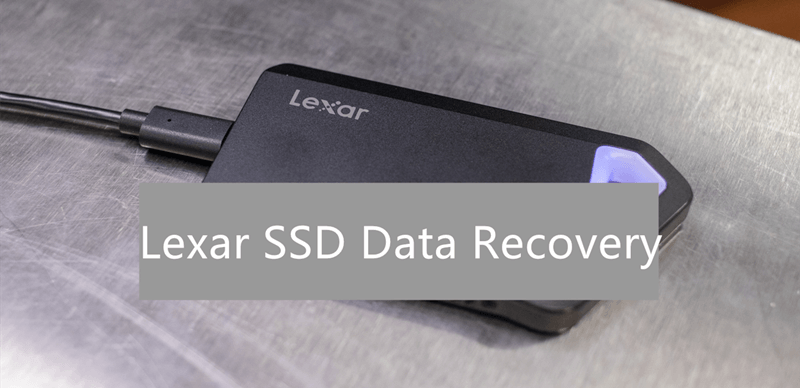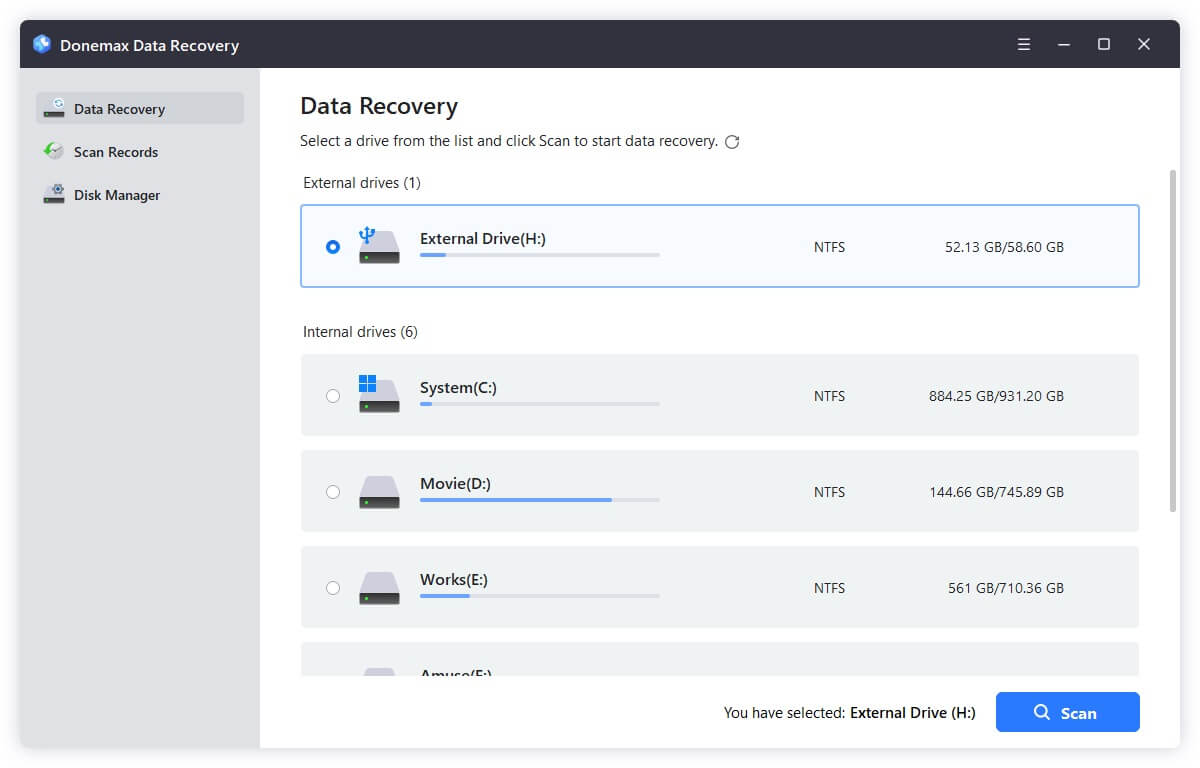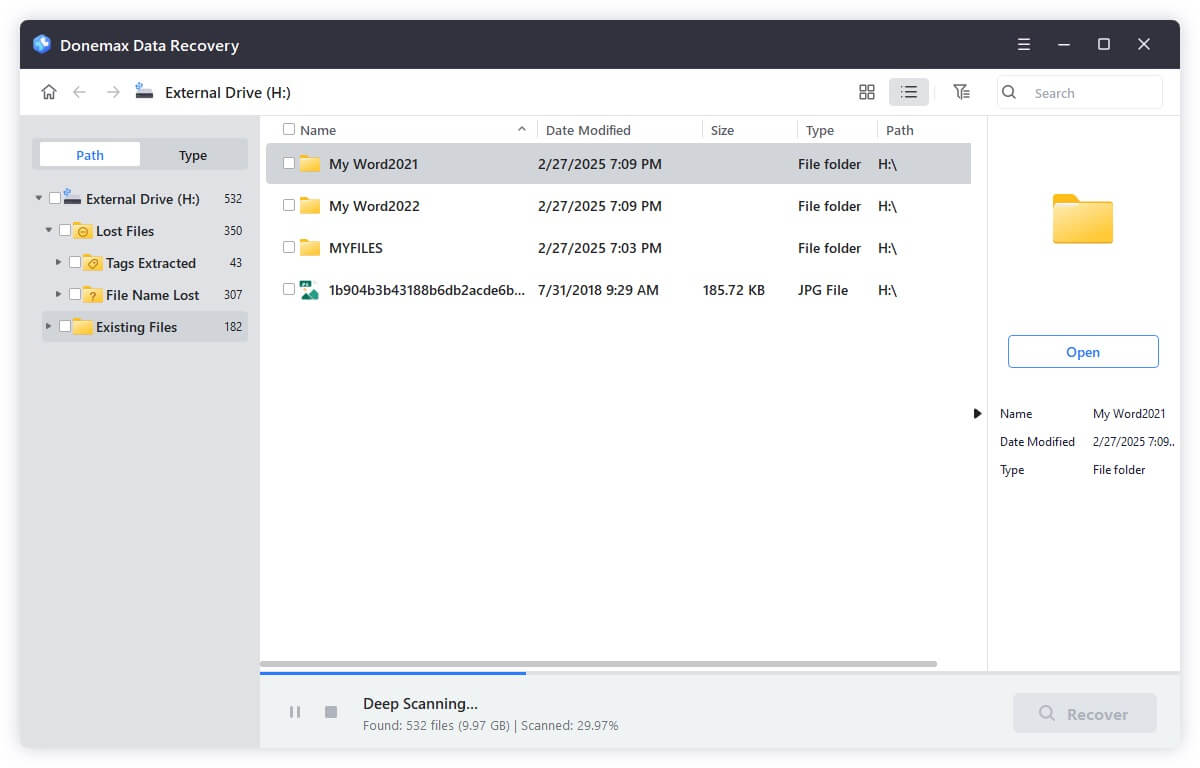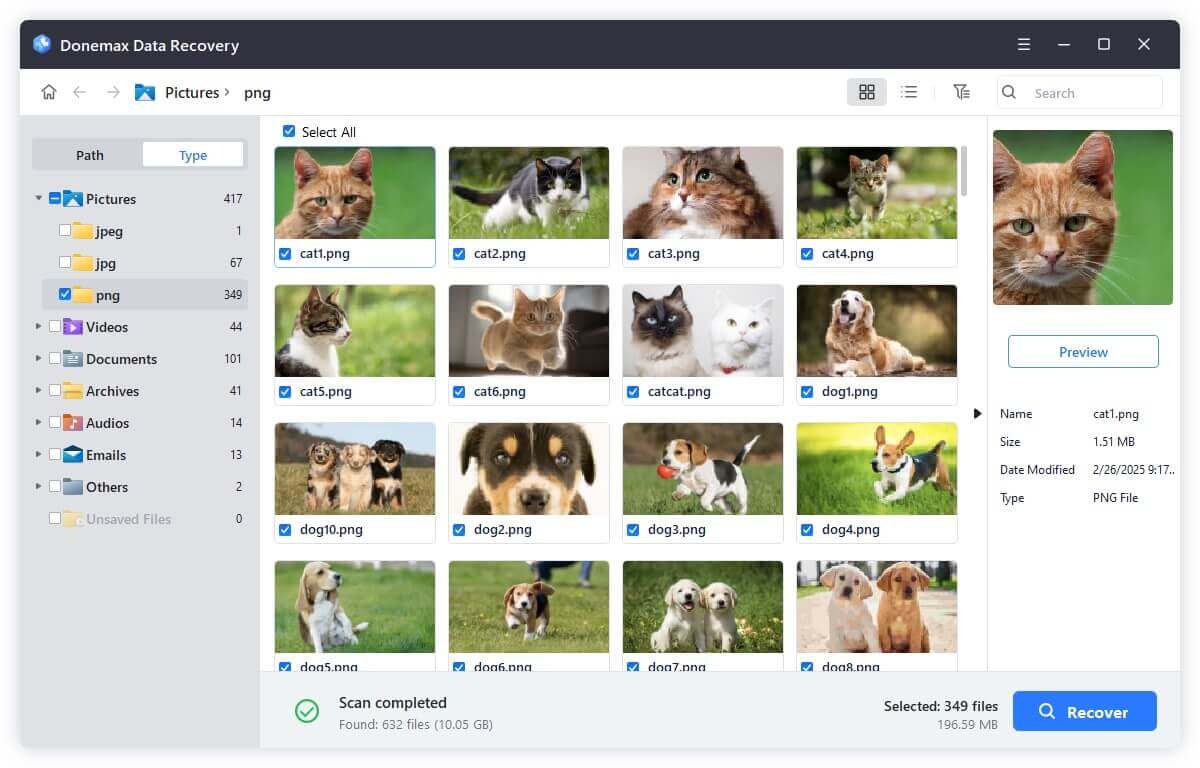PAGE CONTENT:
Have you ever felt terrible when important files suddenly disappeared from your Lexar SSD? We've all been there, and it isn't enjoyable. Don't worry, though! This easy-to-read guide will show you how to get back lost info. Think of it as your digital detective adventure, where you get to save your essential files and become the hero.
Think of your Lexar SSD as a chest full of wealth. We can help you get to it! We'll help you if you accidentally delete something, format something wrong, or have other data problems. Join us on this journey to regain the data you lost from your Lexar SSD.
Understanding the Causes of Data Loss on Lexar SSD
Knowing what could have caused the data loss is essential before starting the repair process. Some everyday situations are accidentally deleting files, formatting, damaging file systems, software not working right, or damaging the SSD physically. Figuring out the causes can help you choose the best healing method.
- Delete files from Lexar SSD
- Format Lexar SSD without backup.
- Lexar SSD becomes RAW or gets crashed.
- Lexar SSD is infected by virus-files.
Once it is known that data has been lost, the Lexar SSD must not be used for anything else until the lost files have been recovered. When you write new data to an SSD, it may take up room used by deleted or lost files so that you may lose the new data permanently.
Data Recovery Software for Lexar Data Recovery
Using good data recovery tools is one of the best ways to regain data you lost on a Lexar SSD. Several third-party tools can restore data from SSDs. Some examples are Donemax Data Recovery, Recuva, EaseUS Data Recovery Wizard, and Disk Drill. These tools usually have easy-to-use menus and step-by-step guides for recovery.
- It would help if you install the chosen data recovery software on a different drive so that it doesn't overwrite the data on Lexar SSD.
- Start the app and pick the Lexar SSD as the drive you want to scan.
- You can tell the software what kind of files you want to restore or let it do a full scan to find all recoverable data.
- You can look at the restored files and choose the ones you want to bring back.
- Don't write over the restored files on the Lexar SSD; save them to a different storage device instead.

Donemax Data Recovery is one of the best data recovery programs for both Windows users and Mac users. With this software, you can quickly recover lost data from a Lexar SSD.
Donemax Data Recovery
- Recover permanently deleted files from Lexar SSD.
- Recover formatted data form Lexar SSD.
- Recover inaccessible or lost data from Lexar SSD.
Steps to Recover Lost Data from Lexar SSD Using Donemax Data Recovery
Donemax Data Recovery is a complete DIY data recovery tool, it is able to recover all types of lost files from Lexar or other type of disk drive.
Step 1. Download and install Donemax Data Recovery on your computer, make sure the Lexar SSD is connected to your computer.
Step 2. Open Donemax Data Recovery, it will list all drives on this computer, then select the Lexar SSD to start data recovery

Step 3. Click on Scan button. This Lexar SSD data recovery software will deeply scan the Lexar SSD and find all recoverable files, such as images, videos, documents, archives, audio files, emails, etc.

Step 4. Once the scan is completed, you can preview all recoverable files. Then select the wanted files and save them by clicking on Recover button.

Donemax Data Recovery offers deeply scan technology and it ensures finding every recoverable file from the Lexar SSD. It also can recover lost data from Seagate external hard drive, WD disk, Samsung portable SSD, USB flash drive, SD card, PC, Mac, digital camera, etc.
Other Lexar SSD Data Recovery Methods
#1 Check for Backups:
So long as you are smart enough to back up your essential files, now is the perfect time to recover them. People using Lexar SSDs should back up their data regularly to external drives, the cloud, or other safe places to lessen data loss.
#2 Utilize Windows File History or Mac Time Machine:
Windows and macOS, for example, come with backup tools that can help you get your info back. Users can go back to earlier versions of files and get info from a specific point in time with Windows File History and Mac Time Machine. For future data protection, ensure these features are turned on and set up on your machine.
#3 Consider Professional Data Recovery Services:
When software-based methods don't work, looking for professional data recovery services might be time. These specialized services have high-tech equipment and clean rooms where they can fix actual SSD damage. They may cost more, but they have a better chance of getting data back from Lexar SSDs that are badly damaged or corrupted.
Preventative Measures for Future Data Protection
When you're done recovering your data, you must ensure it doesn't get lost again. To lower the risk of malware and data loss, back up your data often, ensure the code on your SSD is always up to date, and use robust antivirus software.
- Back up your files often to the cloud or an external drive.
- Update the firmware on your Lexar SSD to get security patches and better speed.
- Use trustworthy antivirus software to keep your computer from getting malware attacks that could cause you to lose data.
Conclusion:
Getting your essential data back from a Lexar SSD is like starting a digital journey. You can get through the ups and downs of losing data if you act quickly and use easy-to-use tools like data recovery software or look into system backups from your computer. Don't add any new data to your SSD; if you need to, get help from an expert. Make it a habit to back up your files regularly, ensure the software on your SSD is always up to date, and use reputable antivirus software to protect your computer. These easy steps will help you get lost info back and keep your digital journey safer.
Related Articles
- Nov 07, 2025Recover Deleted Files from Google Drive: Complete Guide
- Nov 04, 2024Recover Emptied Recycle Bin: Recover Permanently Deleted Files
- Feb 13, 2025How to Recover Lost Data from SD Card on Windows 11/10/8/7, etc?
- May 19, 2025Recover Formatted CF Card: Step-by-Step Data Recovery Guide
- Jun 20, 2025Recover Deleted GIF Files: A Complete Guide
- May 23, 2025[3 Methods] How to Recover Deleted GZIP (.gz) File?

Christina
Christina is the senior editor of Donemax software who has worked in the company for 4+ years. She mainly writes the guides and solutions about data erasure, data transferring, data recovery and disk cloning to help users get the most out of their Windows and Mac. She likes to travel, enjoy country music and play games in her spare time.

Gerhard Chou
In order to effectively solve the problems for our customers, every article and troubleshooting solution published on our website has been strictly tested and practiced. Our editors love researching and using computers and testing software, and are willing to help computer users with their problems
